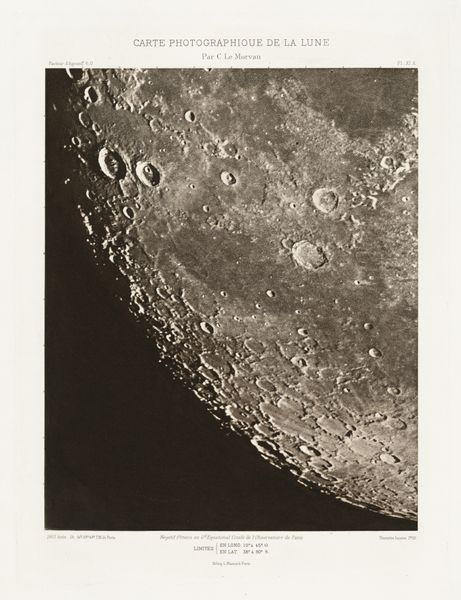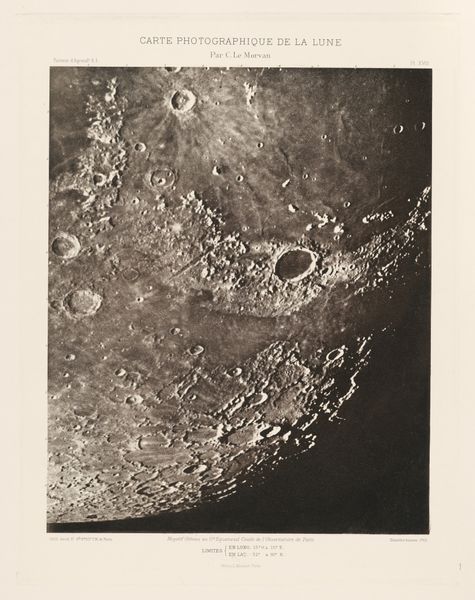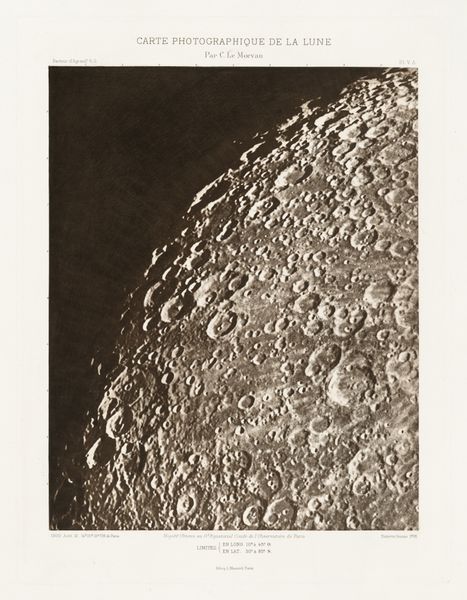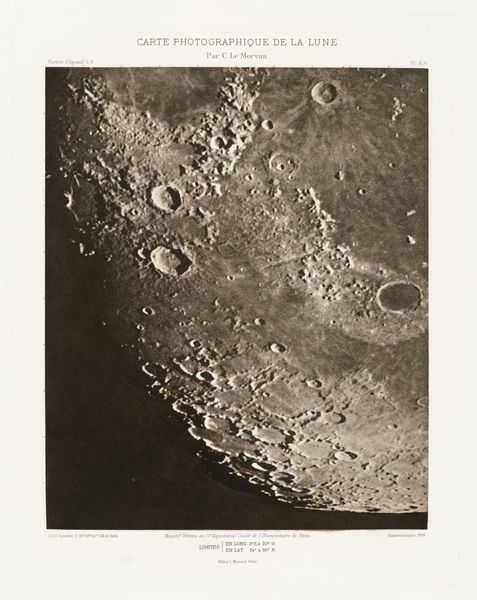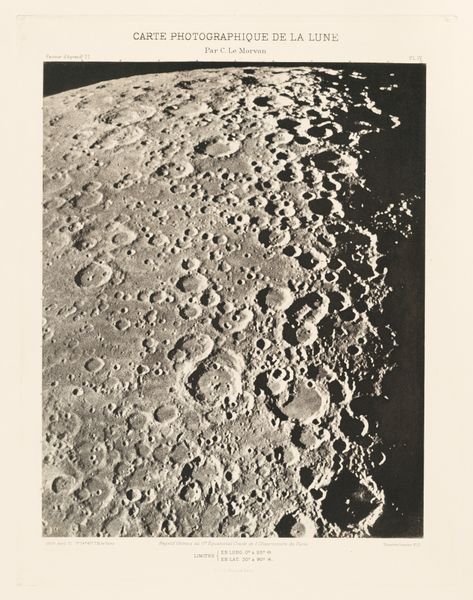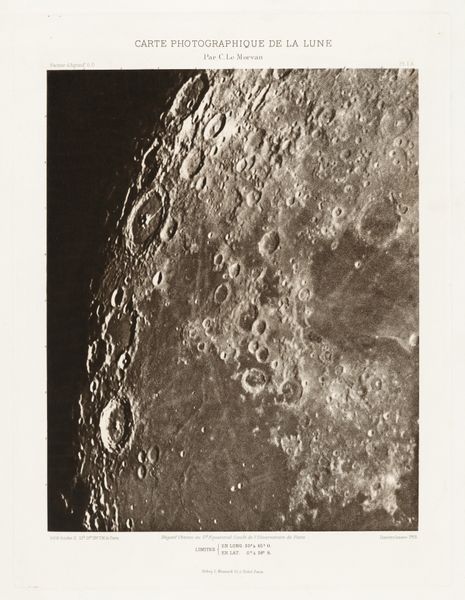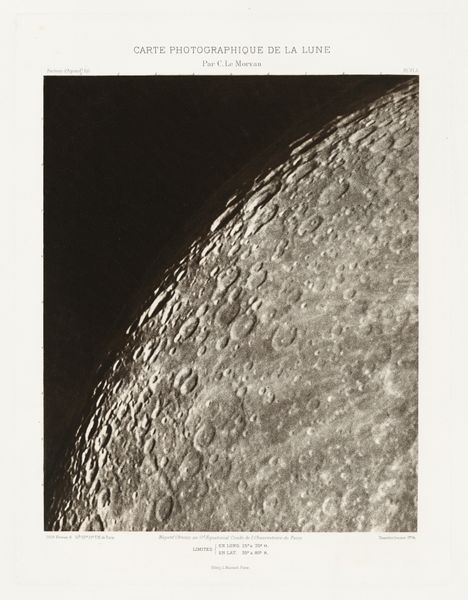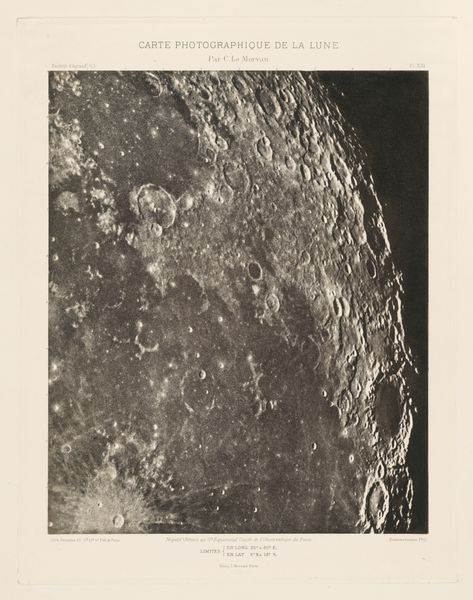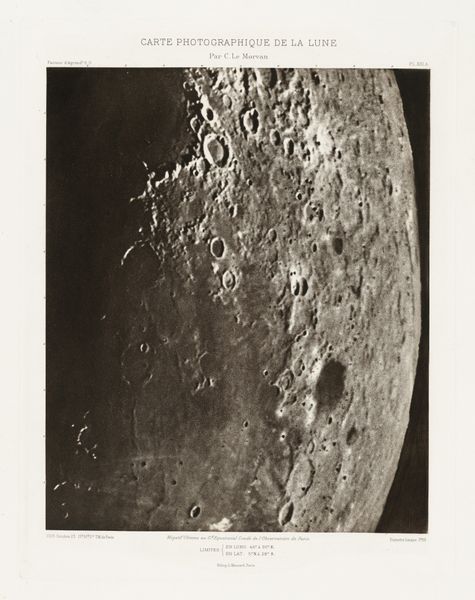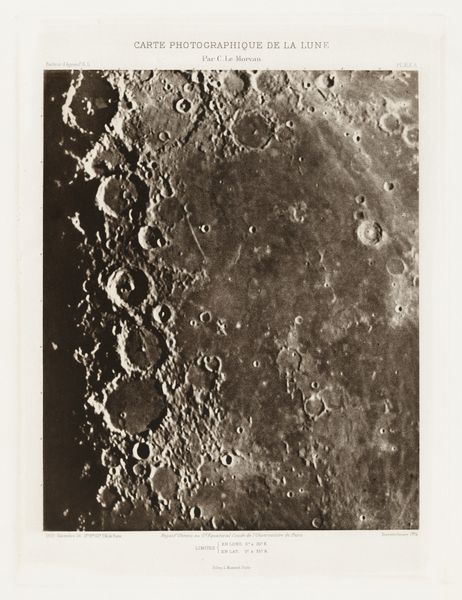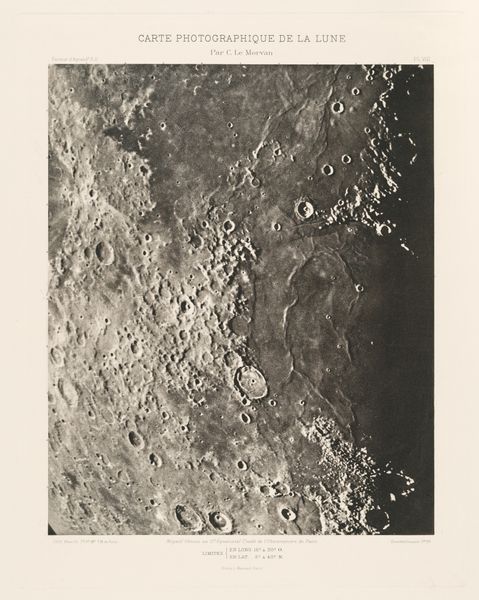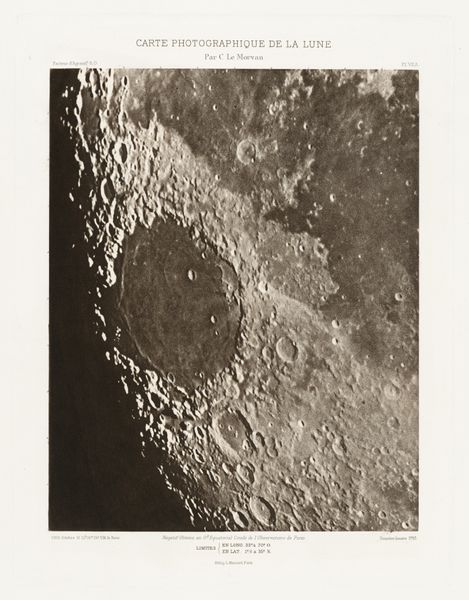
Carte photographique de la lune, planche XII.A (Photographic Chart of the Moon, plate XII.A) Possibly 1908 - 1914
0:00
0:00
print, photography
# print
#
landscape
#
photography
#
geometric
Dimensions: image: 31.1 × 25.5 cm (12 1/4 × 10 1/16 in.) plate: 38.9 × 29.5 cm (15 5/16 × 11 5/8 in.) sheet: 49 × 37.9 cm (19 5/16 × 14 15/16 in.)
Copyright: National Gallery of Art: CC0 1.0
Curator: This arresting image, "Carte photographique de la lune, planche XII.A," or "Photographic Chart of the Moon, plate XII.A," is attributed to Charles Le Morvan, and likely dates from somewhere between 1908 and 1914. Editor: The texture is really striking—almost like pitted leather. There's this stark contrast between the harsh light hitting the craters and the impenetrable darkness beyond the lunar surface. Curator: And context is crucial here. This wasn't just about aesthetic appeal. Le Morvan and others like him were working in an era fascinated by scientific advancement and exploration. The image reflects the intersection of art and science in public perception. This particular plate, XII.A, would've formed a part of a larger atlas. It’s cartography and photography working together. Editor: Absolutely. The geometry dominates, though, even from my standpoint. The shadows define each concave plane, and the craters offer depth. It's a brilliant exercise in light and shadow that conveys the moon's spherical form. And look at how the stark lines contrast the minute textures along the perimeter of the celestial body, really delineating form. Curator: These charts were crucial reference points for astronomers. There was public consumption in mind, and they were of significant pedagogical value. Le Morvan's work reflects both an artistic vision and a commitment to sharing knowledge and a growing global interest in photographic imaging of space and astronomy. Editor: Looking at the gradients in light value alone, from the fully illuminated crater tops to the complete lack of visible data at the image’s border, suggests a kind of melancholy or emptiness, and, maybe a fear of the vastness of our solar system. The photographic process itself even lends a unique tone and almost alien feel. Curator: Well, from a historical perspective, these photographs ignited public interest, and this piece stands as a tangible piece of cultural and scientific achievement from the early 20th century. It makes me think about the contemporary politics of photographic imagery as well. Editor: Thinking about its composition, this piece reveals to me the emotional capability of art and technique itself.
Comments
No comments
Be the first to comment and join the conversation on the ultimate creative platform.
